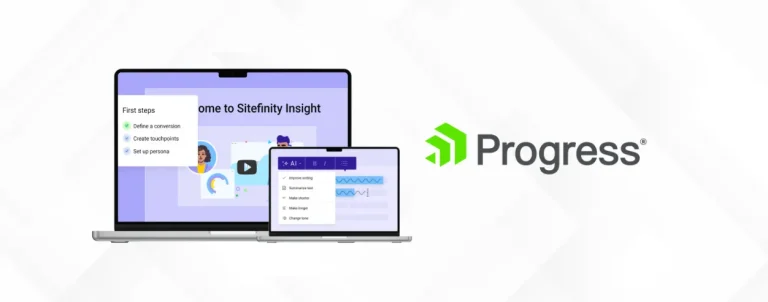Singapore – Progress Software has opened early access to an AI-centred enhancement for its Sitefinity platform, introducing a generative capability that integrates retrieval-augmented generation (RAG) with automated, real-time content assembly.
The new feature, known as Agentic RAG for Sitefinity, is designed to function as an AI-powered layer within the content management process, producing multilingual, dynamically generated digital experiences in direct response to a user’s prompt.
With this step, the company positions itself among the first to embed enterprise-grade RAG technology natively within a CMS environment.
“AI has fundamentally changed the way people access information. As a result, traditional websites with pre-structured content will soon be obsolete,” said Loren Jarrett, EVP & GM of digital experience at Progress Software, commented.
“Today, organisations need to provide a modern, prompt-driven, totally dynamic information experience for their website visitors.”
The initiative comes amid rising demand for AI systems that can unlock information scattered across multiple repositories and deliver verified, context-aware responses. The Sitefinity enhancement applies advanced retrieval and intent interpretation to shape content according to an individual’s needs and behaviour.
It also incorporates GEO to help organisations improve the reach of their material within large language models.
“Introducing adaptive, AI-driven experiences that respond in real time to each user’s context and intent is expanding and redefining what’s possible for Sitefinity,” said Rick van Emmerik, chief marketing officer at Tangerine Telecom, commented.
“This innovation gives organisations like ours a distinct advantage: the ability to deepen engagement, personalise at scale and stand apart in a crowded digital space. We’re proud to be part of this next chapter.”
Agentic RAG for Sitefinity uses AI to gather approved content, determine user intent and assemble tailored web experiences with built-in governance, traceability and compliance safeguards.
The approach is designed to replace fixed page structures and manual personalisation with automated, brand-aligned interactions created through an organisation’s own information assets.
According to the company, the early access release reflects the growing requirement for digital platforms that can shift from static formats to AI-driven, prompt-based delivery that adjusts to changing user expectations in real time.












